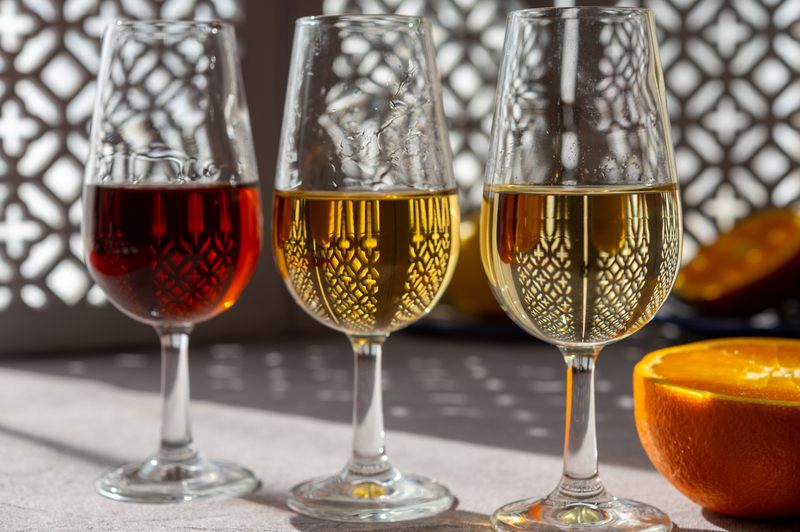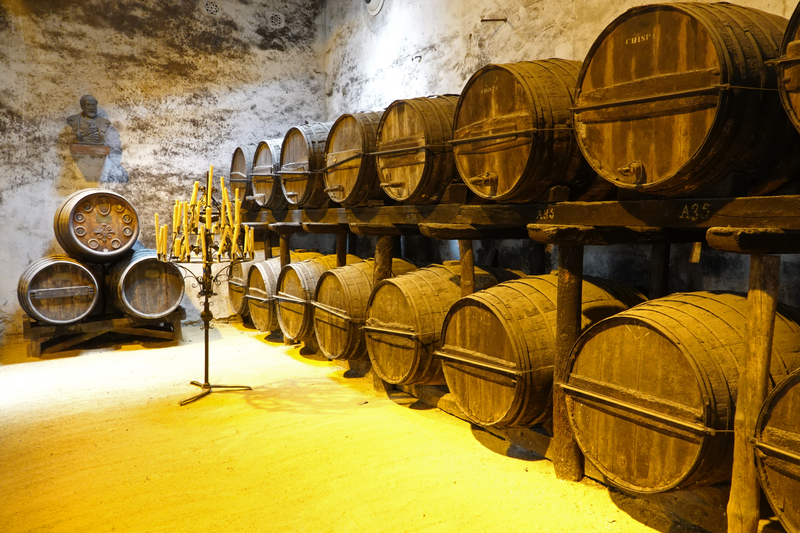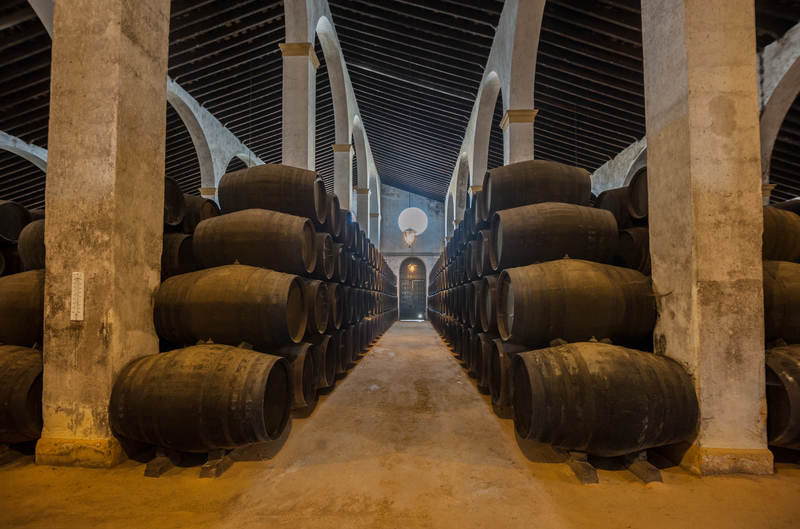I always remember my grandmother, who was otherwise teetotal, having a bottle of sherry ‘for medicinal’ purposes. At Christmas the annual bottle of sherry was bought by my parents along with the turkey and the Christmas tree. This was sweet sherry and for a long time I thought there was no other.
I must admit to not being as abstemious as my grandmother and over the years I have developed a taste for wines. So I have become more familiar with the varieties of sherry and realised that dry Sherries are really quite good.
As a chemist I wanted to understand what makes a good sherry wine? Is it artistry or science? Well actually it’s a bit of both. Sherry is unique to Spain and can only be made from vines growing in a small area in the southern region around the city of Jerez . Here the summers are hot and dry and the soil is mainly chalky to stress the grape. The usual grape variety is the Palomino, being well adapted for the region and resistant to a wide variety of parasites.

Once harvested, the grapes are quickly pressed and the stalks removed to give what is known as “must”. The pH of the must is adjusted with tartaric acid and sulphur dioxide passed through the must to kill off any bacteria. The must is then placed in the fermentation vessel and inoculated with a growing yeast from another barrel. It takes about a week for most of the sugar to be converted to alcohol but it is left for longer to ensure nearly all the sugar is consumed and the wine is dry. The alcohol content is about 11 or 12%.
The solid materials, the lees are removed to give a clear liquid. Now comes one of the special tricks in making sherry. The liquid is left to age in a wooden barrel, but it is not completely full. A film of yeast known as “flor” grows on the surface of the liquid and stops any contact with the air, thus avoiding oxidation to vinegar. The flor is a bacteria that lives on the chemicals in the wine, such as alcohol and any unreacted sugars. They produce special compounds that give sherry its remarkable taste, in particular acetaldehyde.
So far so good but there is much more chemistry to come. Most yeasts cannot survive if the alcohol concentration is too high and that is why often the concentration of alcohol is about 12%. Sherry is a fortified wine, that is, alcohol is added to the wine.
Once the sherry has been fully fermented, it is tasted and viewed and the expert taster decides its fate, whether it is to be made into Fino or Oloroso - If it’s not good enough it will be distilled to give the alcohol to fortify the wine. The Fino and Manzanilla wine has sufficient distilled alcohol carefully added to make it up to about 15.5% by volume, whereas the Olorosos have at least 17% alcohol.
At 15.5% alcohol the bacteria in the flor can survive and so the ageing process occurs with a film of flor preventing oxidation and adding more compounds to the wine. At 17% alcohol content the bacteria cannot survive and so a certain amount of oxidation occurs on ageing to give the browner colour of some sherries.

All these sherries can be described as dry, with the more familiar cream sherry being made by mixing the oxidised Oloroso with a very sweet sherry made from a different grape, called Pedro Ximenez or PX.
The fortified wine is aged in barrels made from American oak in a system known as a solera. Effectively the barrels are placed on top of each other and the young sherry added to the top barrels. Every so often wine is moved from one barrel to a lower barrel, but only small amounts at a time. Effectively matured wine is tapped from the bottom barrel as newer wine moves from higher to lower barrels. The process is carefully controlled so as not to disturb the flor.
This means you cannot talk about a sherry having a particular vintage since it is blended with many different ages and each barrel will always have at least a few molecules of the oldest wine in them. In general the sherry remains in the solera for about three years.
After tapping from the lowest barrel the wine is clarified using egg white or bentonite, a form of clay, and filtered. It is now ready for bottling.
Unlike my grandmother’s sweet sherry she kept for the occasional medicinal tipple, most sherries should be drunk as soon as the bottle is open to make the most of the delicate flavours the fermentation and maturation process has created.
So sherry is special, it is like no other wine and has its own flavours created by the quite unique process of wine making developed in the region. Many Spanish would argue that if you buy real sherry from Jerez, made through this process, there is no such thing as a bad bottle and I’m inclined to agree!
Salut!




Rate and Review
Rate this article
Review this article
Log into OpenLearn to leave reviews and join in the conversation.
Article reviews
Susie Jarvis - 5 June 2014 3:54pm
I thoroughly enjoyed reading the article about sherry which brought back fond memories of my studying for The Higher Wine Certificate at the end of the last century. There is no aperitif better than a very dry sherry such as Tio Pepe, poured over a glass full of ice, drunk whilst preparing Christmas lunch or, well, preparing any meal at anytime of the year. Salut!
Charlotte Fleming - 10 June 2014 1:39pm
I too studied wine and remember struggling with the chemistry elements of the subject. But I never had a problem with the product and sherries have always been a particular favourite. Thanks for the suggestion; salud!